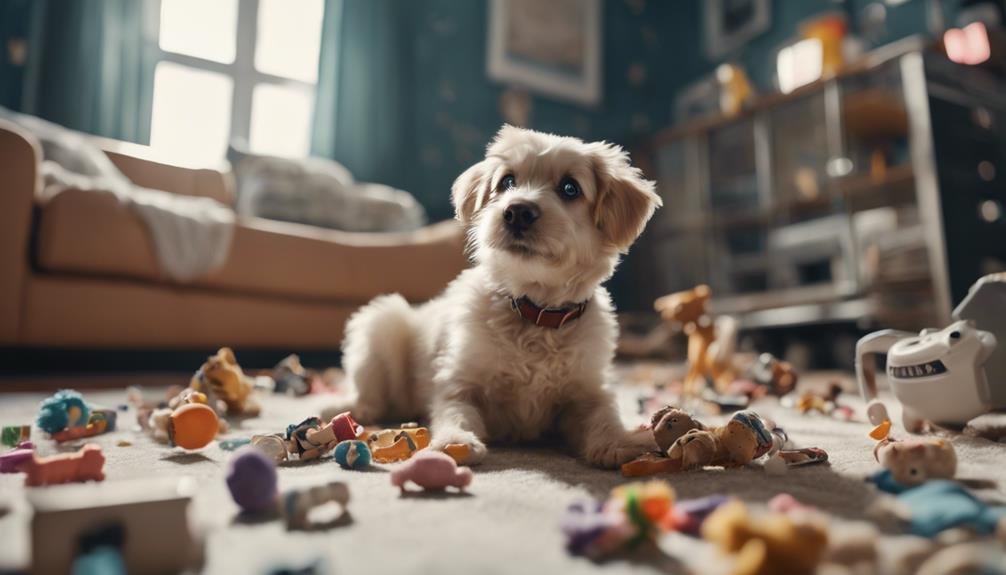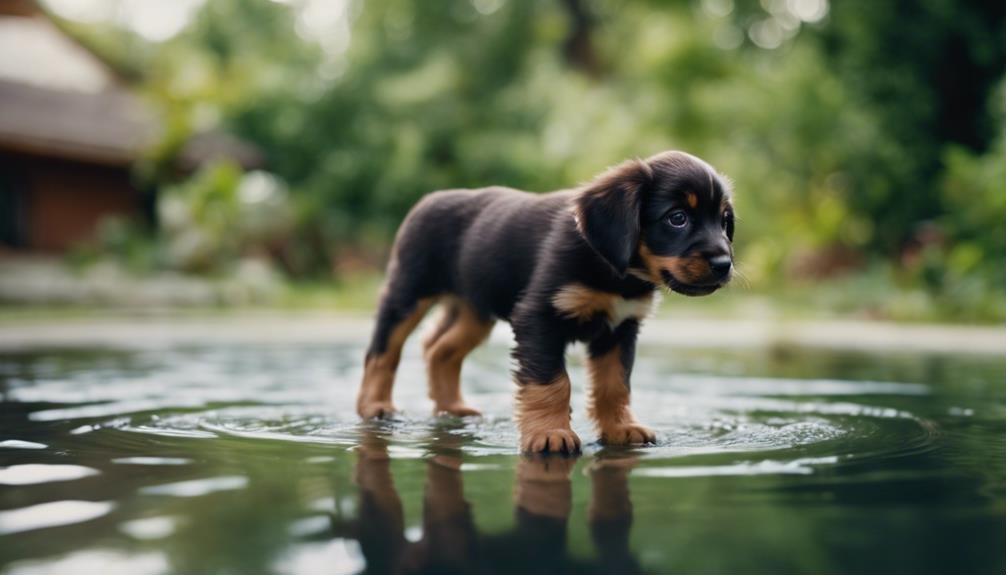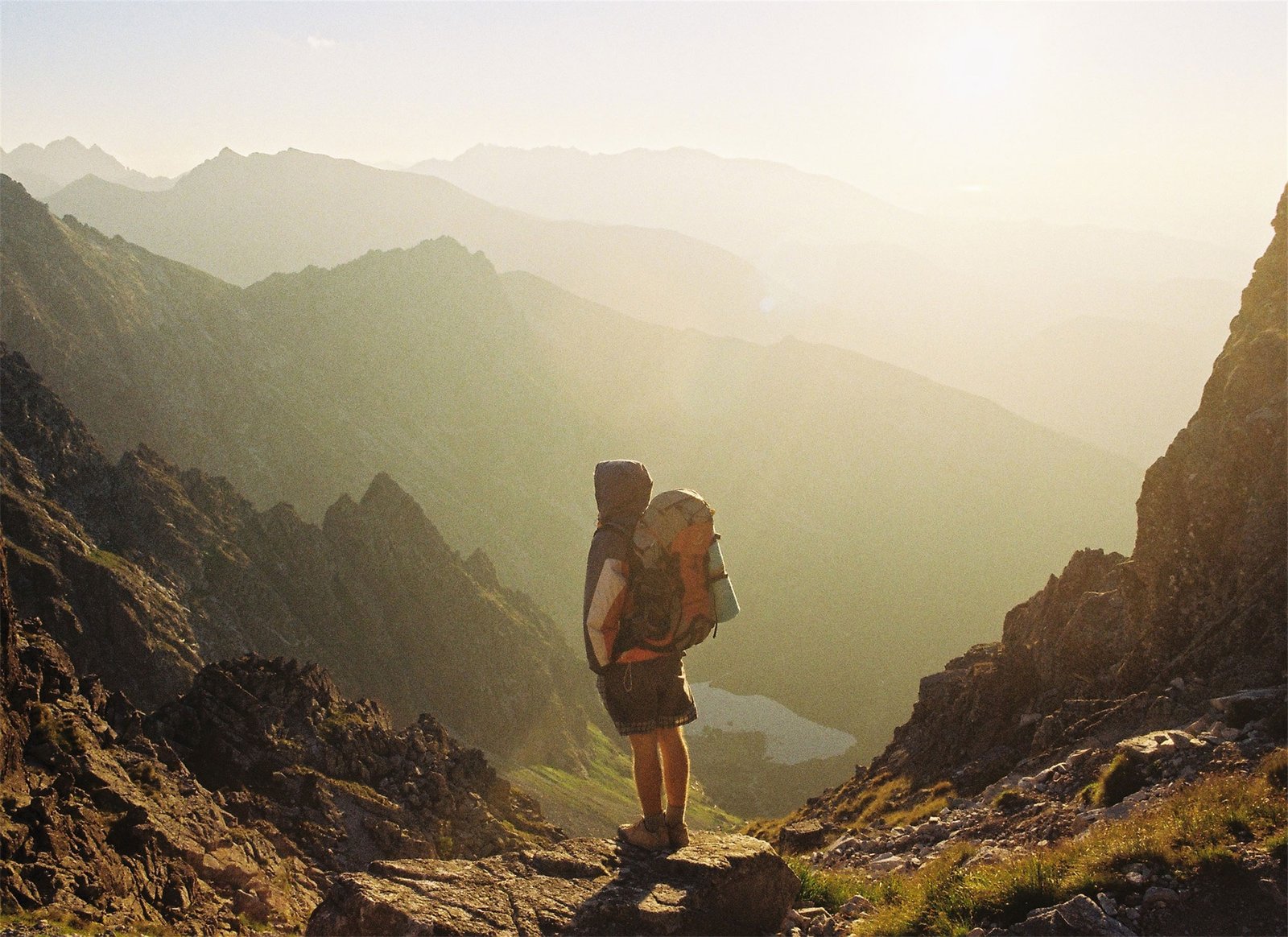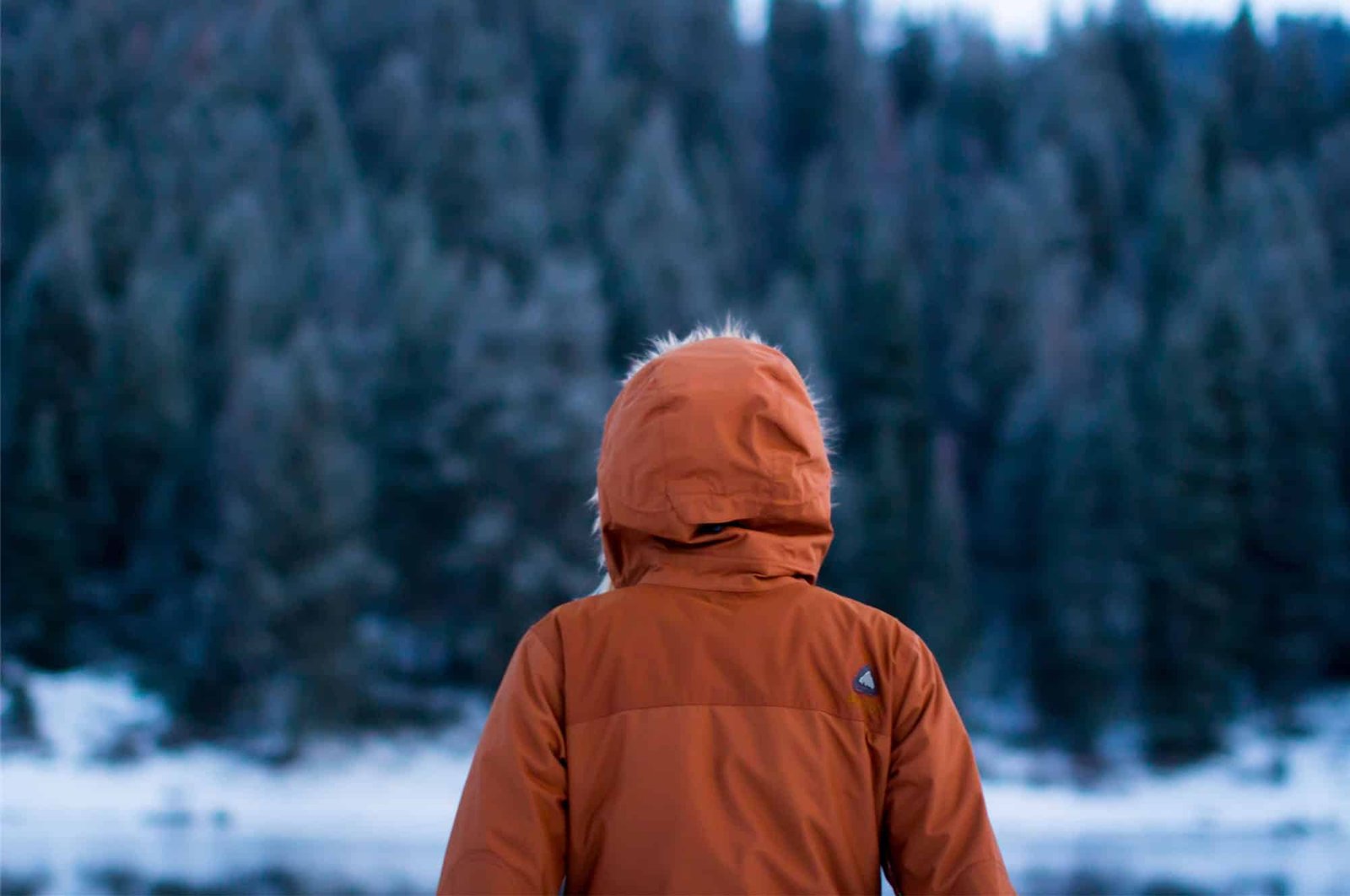A well-trained hunting dog's ability to 'shake it off' on command is a vital aspect of minimizing mess and maximizing enjoyment in the field. By understanding and controlling the natural shake behavior, handlers can maintain a clean and dry environment, even in water-intensive hunting situations. With effective training and hand signals, dogs can be trained to prevent the shake from starting, ensuring a more enjoyable hunting experience. Mastering the shake command requires patience, understanding dog psychology, and consistent training. Now, discover the secrets to transforming your furry friend into a well-behaved hunting companion that will leave you both smiling and dry.
Key Takeaways
- Mastering the shake command requires understanding dog psychology and controlling the dog's head to prevent shaking.
- Hand signals, rewards, and consistent training are essential for teaching the shake command.
- Patience is crucial in bridging the gap between instinct and obedience, allowing dogs to learn the shake command.
- A well-trained shake command prevents annoying situations, ensuring a more enjoyable hunting experience with a cleaner and drier environment.
- Training opportunities abound in water retrieves, Field Days, drill sets, and Water Break moments, strengthening the bond between handler and dog.
Understanding the Shake Command
When it comes to hunting dogs, the shake command is an essential tool in the handler's arsenal, serving as a crucial cue to prevent unwanted water spray and chaos. Understanding dog psychology is key to mastering this command. Dogs naturally exhibit this behavior after exiting water, starting from their nose and ending at their tail. Controlling the dog's head can prevent the shake from starting, making it an essential aspect of training. By recognizing and working with the dog's natural behavior, handlers can capitalize on this predictable action. By doing so, they can maintain a clean and dry environment, even in the most water-intensive hunting situations.
Training the Shake Command
To train the shake command, handlers can employ one of two effective methods: using a dummy like a Dokken DeadFowl trainer or meeting the dog at the water's edge. The dummy discourages dogs from shaking, allowing handlers to take control of the shake. Meeting the dog at the water's edge and controlling their snout prevents the shake from starting. Anticipating the shake and being ready is essential in training. Dog psychology plays a significant role here, as dogs naturally shake dry after exiting water. By understanding this behavior, handlers can use training tips like hand signals and rewards to ingrain the shake command. With patience and consistency, dogs can learn to wait for permission to shake, making hunting trips much more enjoyable.
Using Hand Signals Effectively
Hand signals, an essential component of the shake command, provide a silent yet clear communication channel between handler and dog, allowing for seamless execution and avoiding loud verbal cues that might startle game during hunts. In the heat of the moment, a well-executed hand signal can be the difference between a successful retrieve and a messy, game-spooking shake fest. To use hand signals effectively, it's essential to establish a consistent visual cue, such as a jazz-hands-style signal, and pair it with the verbal command. This silent communication allows for a smooth, distraction-free interaction between handler and dog, ensuring a successful shake command every time. By mastering hand signals, you can take your training to the next level and enjoy a more enjoyable, stress-free hunting experience.
Mastering the Shake Behavior
By grasping the fundamental principles of the shake command, handlers can refine their training approach and transform their dog's instinctual behavior into a well-mannered response. Understanding dog psychology is key to mastering the shake behavior. Dogs will naturally shake dry after exiting water, starting from their nose and ending at their tail. Controlling the dog's head can prevent the shake from starting, allowing handlers to take charge. Training fundamentals, such as using hand signals and rewards, are essential in teaching the shake command. By anticipating the shake and being ready, handlers can instill this behavior in their dogs, making hunting trips more enjoyable and less messy. With patience, consistency, and positive reinforcement, dogs can learn to wait for permission to shake, making them a true hunting companion.
The Importance of Patience
Mastering the shake command requires a deep understanding of canine behavior, and patience is the unsung hero that bridges the gap between instinct and obedience. When training your hunting dog, remember that patience pays. You must recognize that dogs won't instinctively wait for permission to shake; this unnatural behavior demands quiet confidence and consistent training. By taking the time to instill this behavior, you'll reap the rewards of a well-trained dog that can handle the shake command with ease. Avoid rushing the process, and let patience be your guide. With time and practice, your dog will learn to wait for the command, and you'll be spared the annoyance of a wet, shaking dog.
Preventing Annoying Situations
In wet and chilly hunting conditions, a well-trained shake command can be the difference between a pleasant outing and a miserable, shivering mess. A well-executed shake command prevents annoying situations, ensuring a more enjoyable hunting experience. In cold weather and wet conditions, a dog's natural instinct is to shake off excess water, often soaking its handler in the process. However, with a well-trained shake command, you can:
- Avoid getting drenched in cold water
- Prevent muddy paws from tracking into your vehicle or hunting blind
- Enjoy a more comfortable and dry hunting experience
Training Opportunities Abound
With a well-trained shake command in place, the opportunities to reinforce and refine this behavior are abundant, especially during water retrieves when your dog is most likely to get wet. It's during these Water Break moments that you can capitalize on teaching your dog to control their shake. Field Days, in particular, offer the perfect setting to practice and perfect the shake command. As you're working on drill sets, you can seamlessly incorporate the shake command, making it a fun and engaging experience for your dog. By doing so, you'll strengthen the bond between you and your dog, ultimately creating a well-oiled machine that's ready to take on any hunting scenario.
A Well-Trained Hunting Companion
A well-trained hunting companion is a valuable asset to any hunter, bringing a new level of efficiency and enjoyment to the hunting experience. A well-trained dog not only retrieves game but also exhibits good field manners, making the hunting experience more enjoyable for everyone involved. Good hunting etiquette dictates that a hunter's dog should be well-behaved and under control at all times.
- A well-trained dog will not disturb other hunters or their dogs.
- A well-trained dog will not chase game unnecessarily, allowing for a more successful hunt.
- A well-trained dog will respond promptly to commands, ensuring a safe and enjoyable experience for all. By investing time and effort into training, hunters can develop a strong bond with their dog, resulting in a more rewarding hunting experience.
Frequently Asked Questions
What Is the Ideal Age to Start Training a Dog for the Shake Command?
When it comes to training for the shake command, the ideal age is during puppy socialization (8-12 weeks), when they're most receptive to new behaviors, setting the stage for a smooth training timeline and a well-mannered hunting companion.
Can I Use This Command for Dogs Other Than Hunting Breeds?
While hunting breeds come to mind, the shake command transcends breed limitations, making it a valuable tool for family pets, too – think of the messy relief it brings to daily life, not just hunting excursions.
How Do I Stop My Dog From Shaking Excessively After the Command?
To curb excessive shaking, identify underlying anxiety issues and address them through desensitization and counterconditioning. Implement a reward system, praising and treating your dog for calm behavior, to promote self-control and a more measured shake response.
Can I Train My Dog to Shake on Command in a Specific Location?
"Like a well-oiled machine, precision training kicks in when you teach your dog to shake on command in a specific location, leveraging location cues to create a seamless, mess-free experience – anywhere, anytime!"
What Happens if I Forget to Give the Shake Command During a Hunt?
If you forget to give the shake command during a hunt, you'll miss a vital opportunity to control the dog's behavior, leading to hunt disruption and an inevitable soaking.
Conclusion
In the grand symphony of hunting, the 'shake' command is a vital melody that harmonizes the partnership between dog and handler. By mastering this command, hunters can orchestrate a seamless hunting experience, free from distractions and unwanted water spray. With patience, consistency, and positive reinforcement, the 'shake' command becomes a symphony of obedience, yielding a well-tuned hunting companion that's music to the hunter's ears.









